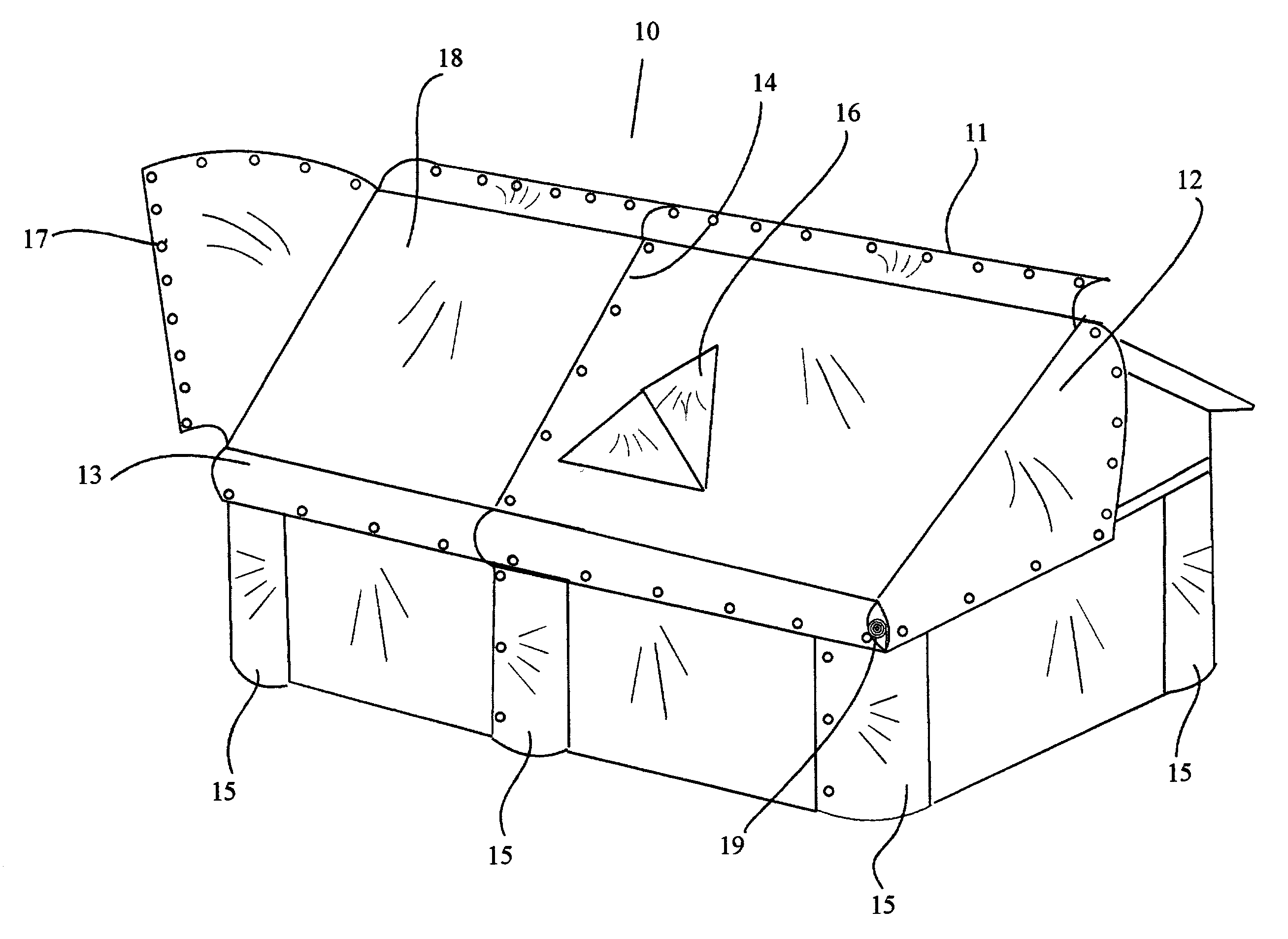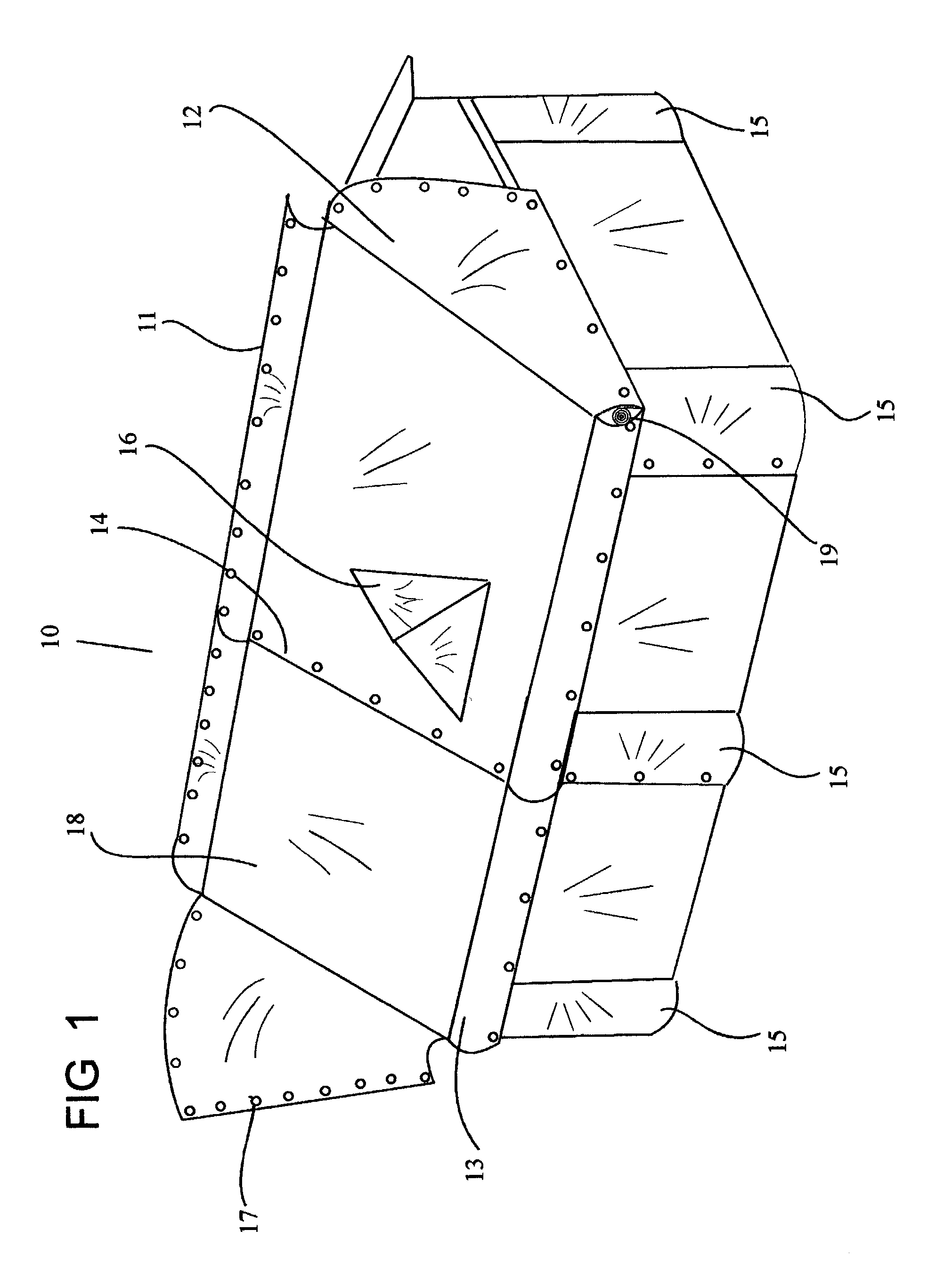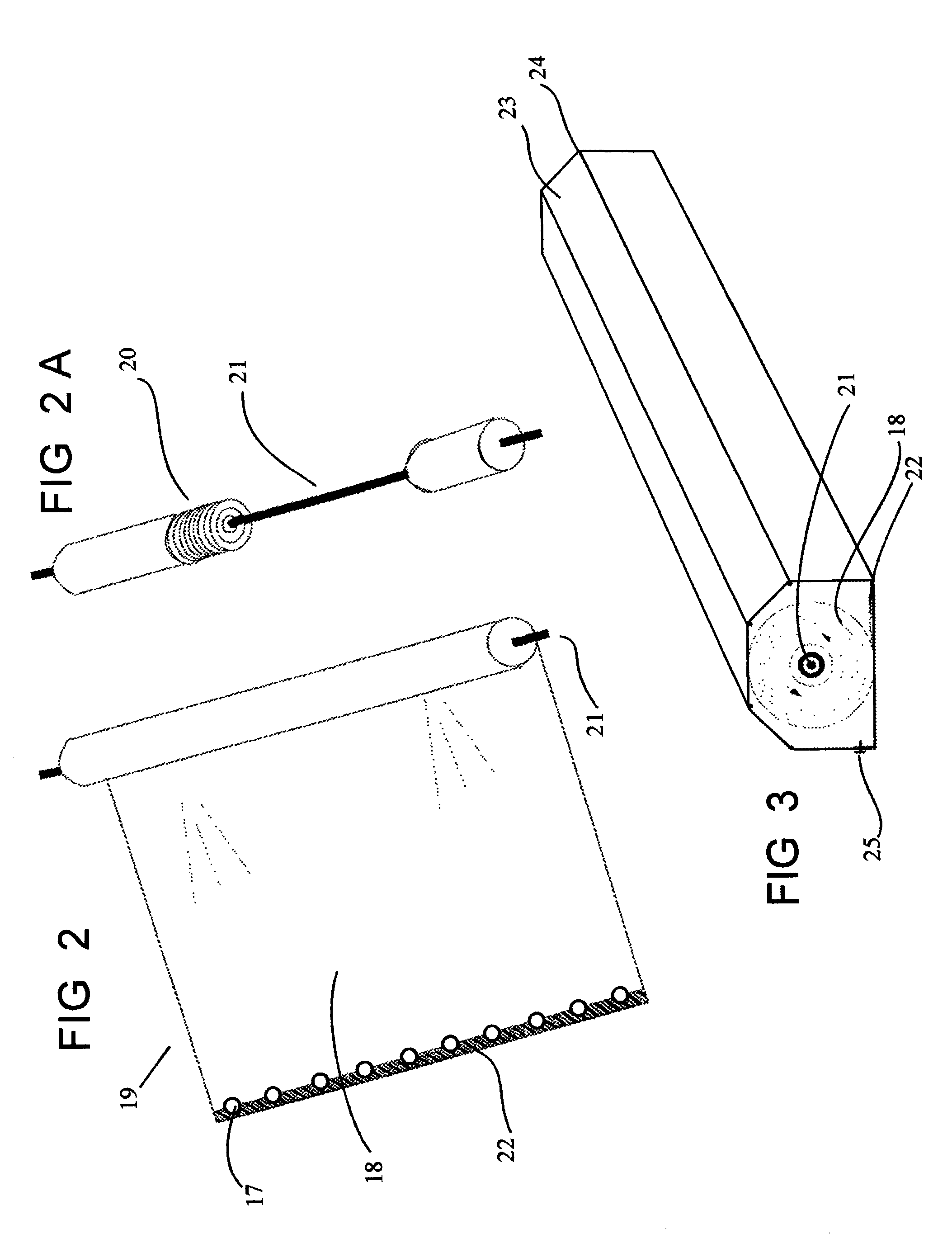Fire protection cover apparatus for structures
- Summary
- Abstract
- Description
- Claims
- Application Information
AI Technical Summary
Benefits of technology
Problems solved by technology
Method used
Image
Examples
Embodiment Construction
[0034] A fireproof cover apparatus for protecting structures in the path of a wildland fire, which embodies the concepts, and principles of the preferred embodiment of the invention is shown in the following illustrations.
[0035] Referring now to the drawings wherein the showings are for the purpose of illustrating the preferred embodiment of the invention only, and not for the purpose of limiting the same.
[0036] FIG. 1 shows the fireproof cover apparatus 10, installed in series on a structure and partially deployed and secured. The connector means 17, is utilized to secure the ridge flap 11, gable end flap 12, eaves flap 13, roof overlap flap 14, and elevation flap 15, to adjoining connection points on adjacent apparatus of the present invention. Connecting all flaps creates the fully sealed fire protection cover. The materials to be used for the fireproof cover apparatus are only limited by their strength, heat resistance, weight, and costs. The preferred material of construction f...
PUM
 Login to View More
Login to View More Abstract
Description
Claims
Application Information
 Login to View More
Login to View More - R&D
- Intellectual Property
- Life Sciences
- Materials
- Tech Scout
- Unparalleled Data Quality
- Higher Quality Content
- 60% Fewer Hallucinations
Browse by: Latest US Patents, China's latest patents, Technical Efficacy Thesaurus, Application Domain, Technology Topic, Popular Technical Reports.
© 2025 PatSnap. All rights reserved.Legal|Privacy policy|Modern Slavery Act Transparency Statement|Sitemap|About US| Contact US: help@patsnap.com



